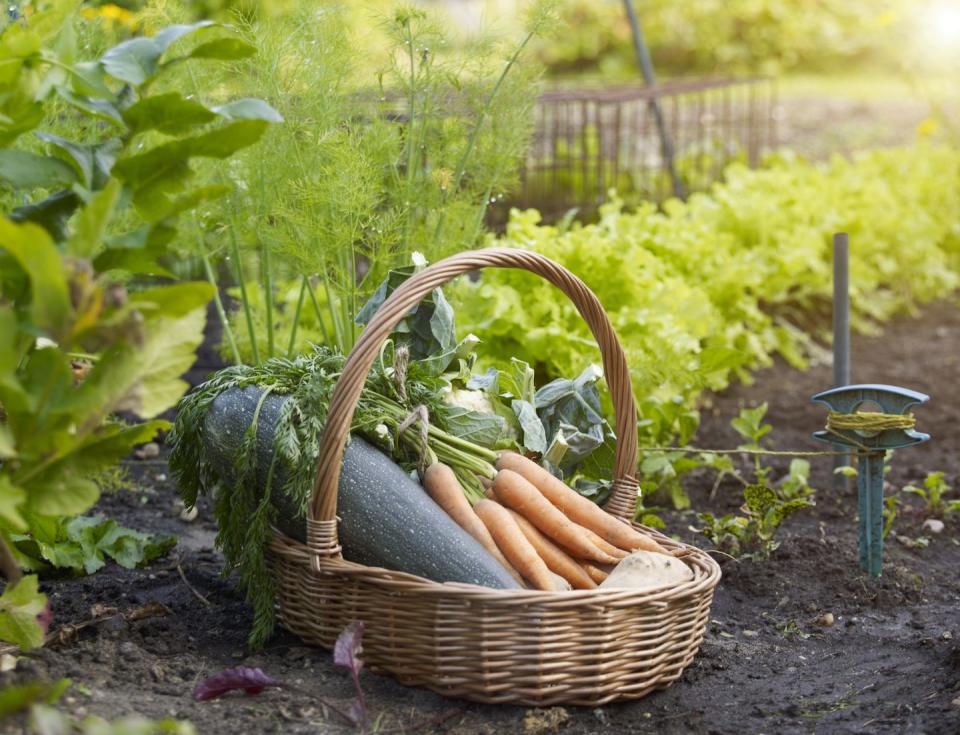7 essential gardening jobs to do in September

September is the perfect month to tackle some important gardening jobs that will protect your lawn, trees, and plants during the harsher winter months, and prepare your spring-flowering bulbs for next year. Make the most of the remaining warmth, and cross off a few of these tasks from your gardening checklist whilst the kids are back in school and you have more time for gardening.
1. Prepare your spring bulbs and fruit

To ensure you have a cheery and colourful garden come spring, plant your spring-flowering bulbs such as narcissi, crocus, and muscari between September and October, or a little later for your tulips, which are best planted between October and November. Now is the time to order trees and shrubs, as they will grow well next spring if planted this autumn, and for those with a fruit garden, don’t forget your strawberries, raspberries, and other berry fruits as these are best planted during their dormant season.
Read: 6 bulbs you should plant right now
2. Have a clean up
A summer garden will usually need a bit of a clear up before winter months. Store away your BBQs and paddling pools, and net ponds before leaf fall gets underway. Remove any dying leaves, stems and weeds from your borders, and if you have a greenhouse, empty any unused pots or containers, as compost or decaying plant material can harbour unwanted pests over the winter months.
3. Tend to your lawn
Autumn weather is perfect for good lawn establishment, so make sure to rake, aerate, and apply an autumn fertiliser that is rich in potassium and low in nitrogen. If you want to lay new turf or sow grass seed, take advantage of your soil being warm from the summer sun, and moist from autumn showers.
4. Maintain your fruit or herb garden and vegetable patch
You should harvest fruit and vegetables regularly during September, as leaving crops on the bough can lead to rot. If any remaining apples and pears are easily blown off the tree by the wind, it usually means they are ready to harvest. You can store undamaged fruits if you can't eat them fresh.

In the vegetable patch, it’s time for lifting and storing. Raise pumpkins and squash off the ground to prevent rotting – they can be safely placed on a piece of wood – and help your pumpkins ripen in time for Halloween by cutting away any leaves shading them. Leave onions or tomatoes to ripen to ensure they store well through the winter.
Collect some of your herbs and keep them in pots on a sunny windowsill in your kitchen or freeze them to use during winter.
5. Collect seeds
A lot of seeds will be ready to harvest in September, so now is the time to pick any seeds you want to grow again next year (make sure to also leave some for wildlife, see next point.) For the best chance of success, make sure your seed heads are ripe – which is generally when they turn from green to brown - and collect them on a dry and sunny day. Store them in paper packets or envelopes somewhere cool, as excess warmth can cause the seeds to deteriorate or rot. Read our guide on how to collect seeds.
6. Give a helping hand to wildlife

As nights become cooler, birds and wildlife will be preparing for the winter to come. Leaving seedheads, especially on plants such as teasels, thistles and sunflowers provides food for birds through the coldest months, and leaving herbaceous borders intact will provide shelter and warmth for small mammals. Take this opportunity to wash and disinfect bird feeders and tables to maintain hygiene.
7. Dividing perennials
Dividing your perennials will keep your plants healthy and vigorous year after year, encouraging them to return to full form come spring or summer. Whilst you can do this almost all year around, it is most successful when the plants are in their dormant season, which for most summer-flowering perennials will be from September to November. The RHS has a great guide that you can follow.
You Might Also Like

